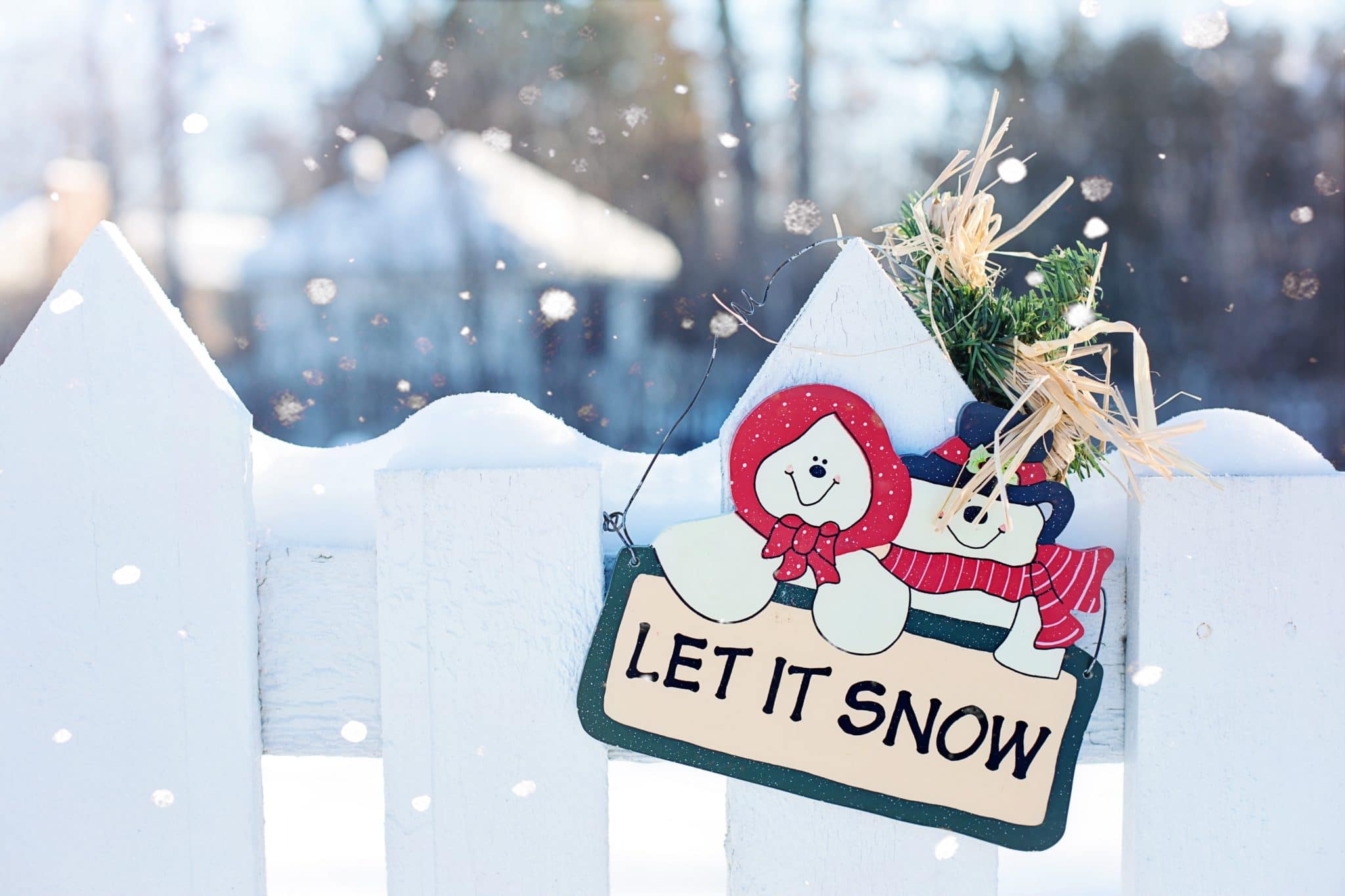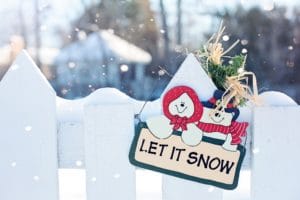
ProtectingYour Rental Properties from Winter Related Damages

With the warm months behind us and the weather cooling, it’s only a matter of time before winter snow and ice are here. The last thing you want is tenants calling you on a freezing January night, saying their pipes have burst, flooding the entire basement and ruining their stuff (which they want you to pay for), or any winter related damages to you rental property.
As a property owner in a northern state, it’s your job to prepare the property to be safe and withstand the winter season. However, it’s the tenant’s responsibility to do the maintenance needed to keep the pipes from bursting.
So how can you make sure they do this?
Prepare the Property (Vacant):
1. Schedule a heating system inspection early and yearly. Check the HVAC system, whether furnace or boiler, to ensure they’ll do their job over winter.
Of all things, you definitely don’t want a faulty heating system over the coldest months of the year, so get these things done now, before winter sets in.
2. Exposed water pipes (outdoors, in crawlspaces, etc.) are susceptible to rupturing over winter, because freezing water expands and puts extreme pressure on the lines.
To avoid these explosions that can turn your house into a soggy disaster zone (and cost tens of thousands in repairs), drain any outside pipes, and wrap exposed pipes in heat tape. You can also add a temperature triggered switch that automatically activates when the temperature drops. It’s an inexpensive solution that will help safeguard against much more expensive winter related damages in the future.
Otherwise, you can leave the heat on to keep the house warm while it’s vacant. Keep it at the lowest setting possible, as you can save on your energy bill. A temperature of 55 degrees Fahrenheit is acceptable to prevent freezing and allow showings.
3. Clear the gutters and inspect the roof to avoid water damage.
Gutters full of leaves will lead to ice dams, which cause water from melted snow to back up under shingles, which leads to interior water leaks.
4. Closing up fireplaces is a good idea for Class C and below rentals. Sure, an open fire is a great selling feature, but they’re also a hazard that can cause smoke damage or worse! Unfortunately, lower-demographic tenants rarely maintain a fireplace properly.
If you have only class A and B properties, then fireplaces can be a great additional selling feature, but with class D tenants, we’ve heard of renters not paying their utilities through the winter and using their fireplace to heat the home instead! So how can you avoid this kind of misuse?
Make sure your lease clearly states that fires are forbidden, or specifies that the tenant is responsible for maintenance if they use the fireplace (at any time of year, not just the winter).
5. Inspect or install good insulation in your property. It will easily reduce energy costs (if you’re the one responsible for utilities, or if it’s a multifamily property). This also prevents moisture from condensing in the house – and dampness, over time, can lead to much more expensive damage, like mold formation and warping. Fiberglass insulation will give you maximum heat retention, especially in attics.
If fully insulating your property isn’t an option, there are cheap alternatives, too. Weather-strips, draft guards, caulk seals, and window insulation films help retain heat and keep out moisture, and are cost-effective and easy to install.
6. Assess the landscaping to see if it will lead to possible hazards during winter due to snow and ice buildup.
An example is weak or long tree limbs over structures or walkways, where snow could accumulate and eventually drop onto the people or roofs below. Trim those branches to avoid any accidents or emergencies – like one going through your garage’s roof in a storm.
The most important step here is: RECORD. EVERYTHING. Having proof that your roof was water-tight and the gutters were clear on your tenant’s move-in date will mean all the difference if you later have a dispute about who’s responsible for damages.
Prepare the Tenants (Occupied Properties):
Once your unit is rented, much of winter maintenance becomes the tenant’s responsibility – so how can you keep your rental properties safe from winter related damages while they’re tenanted? By requiring it in your lease! Make sure you have these clauses, and inform tenants of what they need to do to maintain the property year-round:
1. If your tenant intends to go away for an extended period of time during winter (or any other time of year), have them seek your approval and take the necessary precautions, like leaving the utilities on to prevent pipes freezing.
Specify the penalties you’ll impose if they don’t take these required steps to winterize the property prior to leaving, or fail to notify you before they go away. (They should also be aware that the insurance may become invalid if they leave more than x months.)
2. Snow removal is a must during the winter! So make sure somebody is tasked to keep snow and ice from building up on walkways, driveways, and structures.
You can also opt to offer snow removal service that’ll be charged on top of their rent, if the tenants don’t want to do this themselves.
3. Teach them how to use the heating system (boilers, thermostats, furnaces) during move-in, and show them what to do if they leave the house over winter. Do they leave the heat on? What temperature?
Same goes with the water systems. They should know where the water valve is to shut it off when needed (like if they’re going away, or there’s a water-related emergency). This will mean they can quickly stop flooding if a pipe bursts, without you having to get out of bed at 3 AM and do it yourself.
4. Require them to properly store outdoor items, like lawn chairs, flower boxes, and sprinklers, that could suffer damage if left outside over winter.
Make sure you have an updated and detailed inventory list of these items, so you can charge any damages to their security deposit at the end of the tenancy.
5. Require them to maintain the landscape. Potential hazards (tree limbs over roofs or weak trees near structures) should have been eliminated prior to move-in, but the tenant needs to stop any new hazards from forming during the lease.
These tasks don’t apply to just the cold season, but it’s worth mentioning winter specifically in your lease, because people often tend to neglect the outside when they’re warm and cozy inside.
6. Securing doors and windows should be the tenant’s responsibility, especially during bad storms and high winds. Left unhinged, they can slam around and get damaged during harsh weather.
Include them in your inventory list to charge repairs on their security deposit, if needed, and make it clear that any damage due to tenant negligence will be their responsibility.
In general, if any damage happens to the property, have a deadline for the tenant to inform you. If the water pipe in the upstairs bathroom is leaking ice water, how many days do they have to report?
If you allow them to delay, the damage might get worse, so impose a penalty for failure to report these issues, and make it clear that anything not reported within the time limit will be their responsibility to pay for.
In fact, all of these clauses can be part of the rent agreement as seasonal maintenance clauses, with clear expectations and optional penalty for non-compliance.
Taking precautions like these can help to prevent most long-term, winter related damages to your rental properties. And if issues do arise due to tenant negligence, there will be little room for disputes over whose responsibility it is to pay for repairs.
Any winter-proofing tips we’ve missed? Sound out below before the winter season begins!
Image Courtesy of Jill Wllington